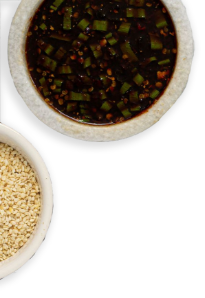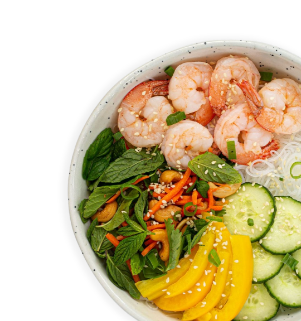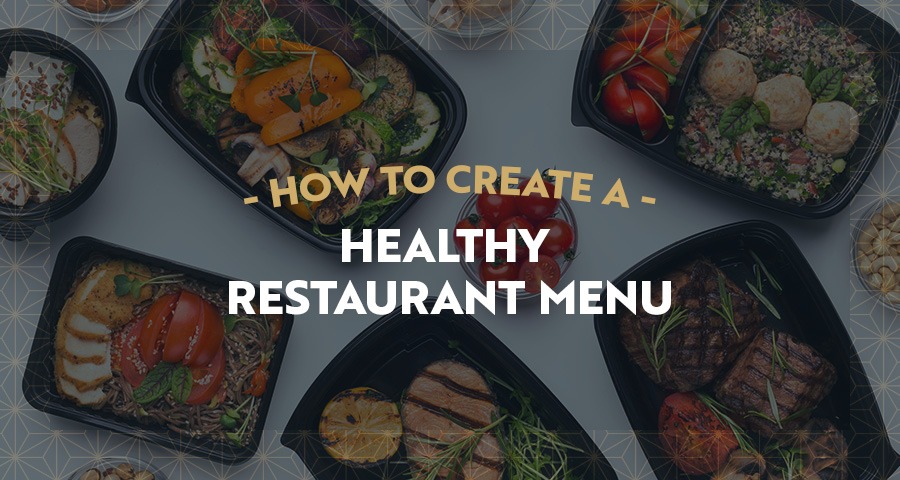
A healthy restaurant menu will look different for everyone. Diets, trends and popular ingredients or dishes can shape how a person views healthy meals or lifestyles. Ultimately, your definition of healthy menu options should align with your customer’s ideas and reflect what they enjoy eating. Creating a healthy menu could mean updating current dishes, starting fresh with new ideas or finding a balanced combination of the two to craft appealing options and nutritious dishes.
Why Target Diet-Conscious Consumers?
Eating more healthful foods is becoming more mainstream, and consumers across the board enjoy nutritious meals from their favorite restaurants. When you target diet-conscious consumers, you can broaden your customer base by welcoming those with dietary restrictions while still appealing to your longtime customer base.
People with dietary restrictions often struggle to eat at many restaurants because they can’t find food that will satisfy their needs and keep them full. Using clear labels and expanding meal options can help you grow to include this typically underserved market while encouraging those without restrictions to eat whatever they find appetizing.
Should You Add Healthy Menu Items or Change Your Whole Menu?
Updating your menu by reimagining current dishes and adding new options can help you build the menu your customers want to see. Integrating nutritious ingredients adds fresh flavor while keeping those fan favorites that keep your customers coming back for more on the list.
However, starting from scratch with new recipes can show your customers you’re making a significant investment to reflect their tastes and preferences. Opt for whatever will boost your business and satisfy the hungry people who walk through your door.
You can revamp your menu or completely rebuild from the ground up. This guide shows you how to make a healthy menu for your customers by discussing common dietary restrictions, healthier substitutions, ingredients to avoid, nutritious ingredients and ways to spice up your dishes.
Chapter One: Common Dietary Restrictions
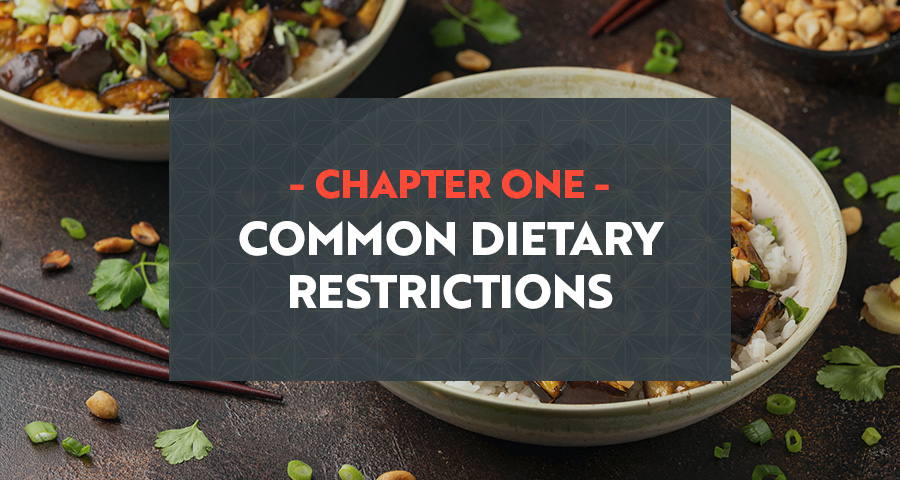
Understanding common dietary restrictions and popular health diets can help broaden your customer base. You can better serve consumers without limiting your menu. Discover the restrictions and diets to consider when updating your menu.
What Diets Should You Consider When Creating Your Menu?
Dietary restrictions can lead many consumers to opt for one restaurant rather than another. People enjoy smiling at the table while their loved ones choose between a few meals they’d love to try. Yet, many people are unsatisfied with the few options that can satisfy their diets at a restaurant. Whether people have dietary restrictions or follow specific diets, consider these diets when crafting your menu.
Most Common Dietary Restrictions
Here are some of the most common dietary restrictions to keep in mind when creating or adjusting your menu:
Gluten-Free
Gluten gives viscosity and elasticity to baked goods and is one of the many proteins in wheat, barley and rye. Currently, around 6% of the United States population has gluten sensitivity, which can cause stomach pains, indigestion and nausea. Many others without this sensitivity try to avoid gluten to attain what they feel are healthy diets that encourage a better lifestyle.
If you offer gluten-free dishes at your restaurant, you can rely on gluten-free starches, flour and grains. You can craft a new gluten-free menu or update your recipes with alternatives that encourage those with this sensitivity to try some of your fan favorites.
Dairy-Free
People who follow a dairy-free diet may have lactose intolerance, making them unable to consume most dairy products. Between 30 and 50 million Americans have this dietary restriction, and simple changes can make your dishes suitable for a broader consumer base. Try these at your restaurant:
- Lactose-free milk
- Clarified butter or ghee
- Fermented dairy products
- Hard, mature cheeses
Vegetarian or Vegan
Vegetarian or vegan diets are plant-based diets that avoid meats, fish and poultry. A vegetarian diet is an umbrella term to describe others, and a vegan diet is a type of vegetarian diet. Some vegetarians may consume eggs or dairy products such as whole milk, butter or yogurt. Vegans avoid all animal and animal-derived foods, including honey, fish-derived sauces and gelatin.
You can appeal to vegetarians and vegans by offering plant-based dishes. Emphasize vegetables, seeds, nuts, fruits and grains. Provide delicious salad options or get creative with plant-based protein sources to fill their plates.
Allergies
Food allergies can have a range of effects, from minor to deadly. Common food allergies include soy, wheat, peanuts, fish and eggs. There is no way to tell what allergies your guests might have, but you can still provide them with a worthwhile experience. Swap common allergens for alternatives or keep these items separate from other ingredients and equipment in the kitchen. You can also craft alternative menus for dishes without these allergens if you rely on one or more of them for several dishes.
Kosher
A kosher diet refers to Jewish dietary principles. Those who follow this diet avoid certain animal products, including pork, and don’t mix meat and dairy. A kosher diet also uses specific slaughtering methods, blood prohibition and separate equipment for different foods. You must ensure your business uses the proper techniques to appeal to people who follow kosher diets, including keeping ingredients and equipment separate from other foods and utensils.
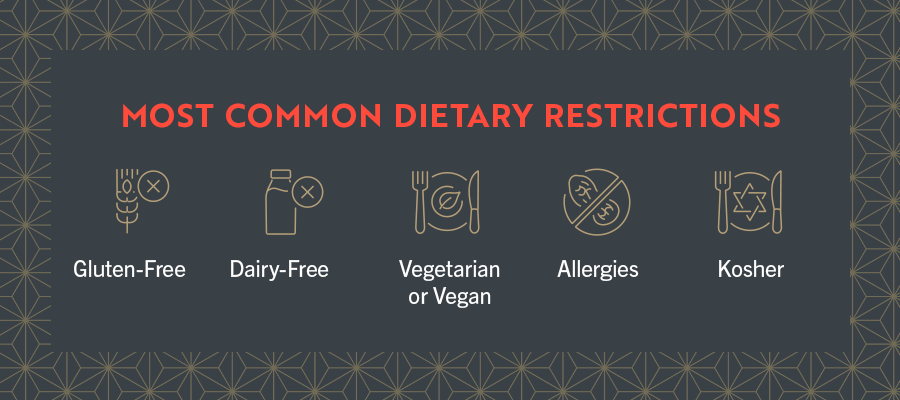
Most Popular Diets
Many people follow popular diets to achieve their weight loss or fitness goals. While you should not feel required to satisfy these diets, aligning some meal options with them can create an appealing menu for your customers. Here is a list of diets you’re likely to see in your customer base.
Keto
This low-carb, high-fat diet promotes weight loss and encourages a caloric intake of 70% fat while restricting carbs to between 20 and 50 grams daily. Fill your menu with non-starchy vegetables, low-sugar fruits and lots of protein to satisfy this diet.
Mediterranean
Mediterranean diets promote non-processed, fresh foods like fish, olive oil, chicken and vegetables. Keep this diet in mind when you offer salad, fish and non-meat dishes.
Paleo
Those who follow the Paleo diet consume fresh fruits, vegetables, grass-fed meats, nuts, seeds, seafood and healthy oils. They avoid legumes, processed foods, potatoes, refined sugar, salt and dairy. You can satisfy this diet by swapping processed foods for non-processed alternatives and sourcing ingredients like meat and vegetables from local farms that grass-feed livestock and deliver fresh produce.
Alkaline
People on an alkaline diet avoid foods that become acidic after consuming them. Vegetables, fruits, legumes and nuts fill their plates, but they avoid many other foods. It might be helpful to craft an alternative menu to satisfy the alkaline diet and fill it with flavorful dishes consumers can enjoy.
Tips for Diet-Conscious Menus
When updating your menu to include more diet-conscious food options, you want to ensure you’re clear about which options will satisfy different needs. Keep these tips in mind for your menu:
- Use symbols: Add a legend to your menu to let customers know when they can choose grilled meats and fish over fried or sautéed options. You can use a “V” to tell consumers when dishes suit vegetarians or vegans. Use a similar letter system to indicate other diets. Choose symbols for each restriction, alternative or diet you want to highlight.
- Make substitutions: You can satisfy many diets by making healthier substitutions to your ingredients. For instance, use natural fruit juices in recipes and cocktails, opt for high-quality oils when cooking, and offer side options like vegetables, brown rice and legumes rather than potatoes or processed grains.
- Source from local farms: Stay away from processed foods and opt for grass-fed livestock and produce from local farms. Advertise your commitment to fresh ingredients and fill your menu with these options.
- Detail nutrition labels: You may not want to list every ingredient in each dish, but you can provide calorie counts and advertise low-fat or high-protein options to appeal to those seeking to maintain a specific regimen.
Read on to Learn What Ingredients to Use in Your Menu
Awareness of popular diets and food sensitivities is the first step in creating a diet-conscious and healthy menu. In the next chapter, we’ll discuss what ingredients should fill your menu, so you can begin crafting nutritious dishes your customers will love.
Check out our recipes if you’re looking for inspiration. You might find new foods to incorporate or an alternative to one of your classic dishes.


